Enemies of Rome 4.1 - GENSERIC - “The Vandals Assemble”
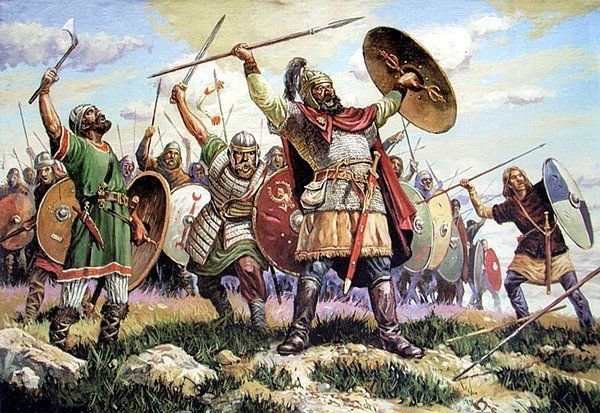
The Origins
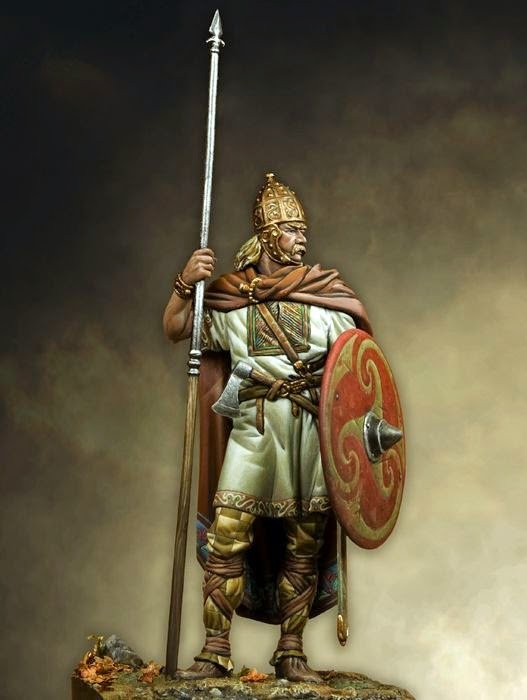
Between the Ist and the IIIrd century, they start to move towards the interior of the European continent, and more precisely in an area corresponding roughly to Silesia and Slovakia. This central position put them in contact with a lot of other tribes like the Goths and the Sarmats, from which they acquire a taste for riding and also in contact with the Romans, and they don’t lose time in discovering that raiding and looting their frontier suit them fine.
In 271, the Emperor Aurelian (whom I spoke about in the episodes about Zenobia) beat them and hire 2000 of their riders in his army - evidence that their skills were now firmly proven.
Settled in Pannonia by Constantine in 330, they seem happy of their lot for the next centuries after that, furnishing larger and larger portions of mercenaries into the Roman army, until even one of them - the famed Stilicho - reached the highest echelons of power before to be executed in 408 in a palace coup.
The Cataclysm
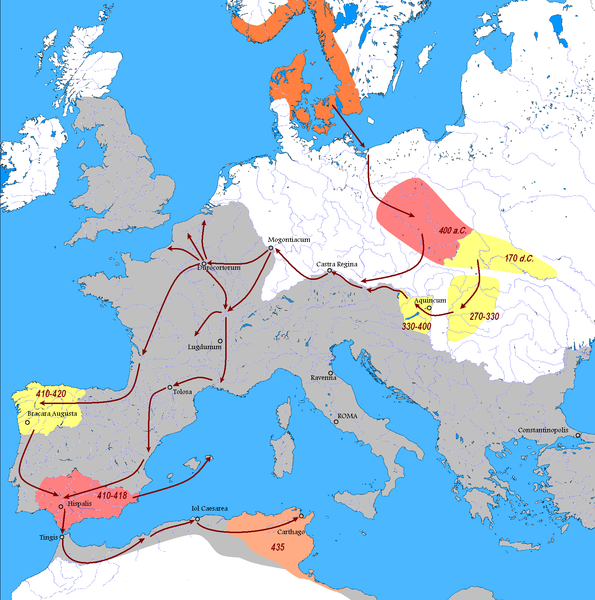
[Source]
Everything is destroyed ( and everything begins again) in 408 when the Huns invade. The tribes which don’t pledge allegiance to the riders of the steppe have only two choices: be exterminated by the Hunnic steamroller or flee West, triggering a domino effect where tribes trespass on each other’s territory and crash, like an avalanche, into Roman territory.
Even if some Vandals remain behind and join the Huns, the largest part of the Vandals (along with the Suebi and the Alans), migrate West - and manage to cross the frozen Rhine in the dead of winter 406, pouring in Gaul and wrecking everything in their wake.
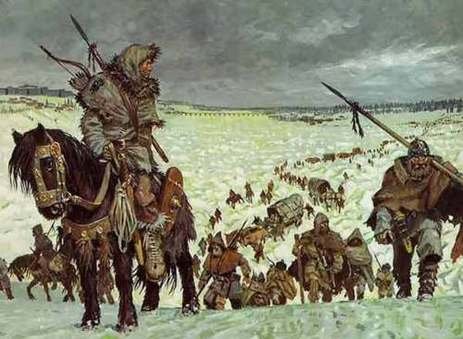
[Source]
Eventually, after 3 years of apocalyptic rampage in a Gaul abandoned by the central Roman power to its own device, the Vandals crossed the Pyrenees in 409 and entered the Iberian peninsula.
In Iberia
In Iberia, the Sueves, Alans, Hasdings and Sillings very much liked what they saw and divided the country between themselves. Sueves and Sillings took over the north-west quadrant of the peninsula, while the Alans went for Lusitania, and the Hasdings for the Betica (future Andalucia).
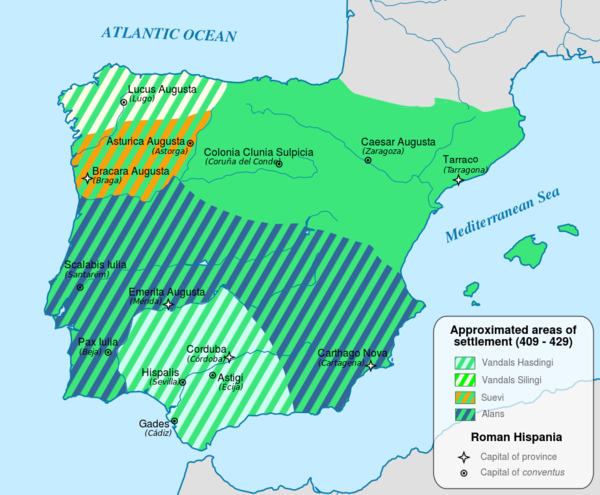
[Source]
But their hopes were short lived: the Romans were not in a forgiving mood and didn’t want to abandon the Spanish peninsula so easily. Always short of soldiers, Rome outsourced the job to the Goths, who crossed into Spain and battered the Alans, Sueves and the Sillings in a succession of battles. The Alans and the Sillings, practically exterminated, having lost their kings, had no other choice but to join and merge with the Hasdings in the South of Iberia. The king of the Hasdings, Gonderic, took therefore name of King of the Vandals and the Alans. No longer would there be any distinction between Hasdings and Sillings.
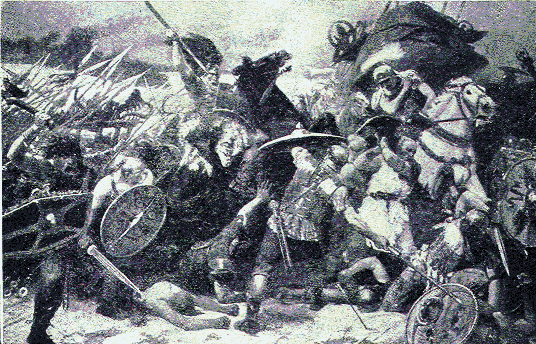
Genseric rises
By 428, the Vandals are still in Iberia. They have just secured the town of Sevilla, and they may have stayed there for ever, was it not for the sudden death of Gonderic. Some say he died of illness, some say it was a punishment of God for desecrating a church in Sevilla, and other say that he died by the hand of his successor and half-brother, our hero of the day: Genseric.
The historian Jordanes leaves us a great portrait of Genseric in his History of the Goths:
Genseric was a man of moderate height and lame in consequence of a fall from his horse . He was a man of deep thought and few words, holding luxury in disdain, furious in his anger , greedy for gain, shrewd in winning over the barbarians and skilled in sowing the seeds of dissension to arouse enmity .
Any other ruler would probably make his possible to stay in Iberia as long as possible, but Genseric was no common ruler. A good warrior, a cunning politician, and a skilled diplomat, Genseric was always on the lookout for fresh opportunities of conquest. He knew that the Romans would never stop trying to reconquer Iberia, and since the mountains were not enough to hold them off… he decided to put the sea between them and his people.
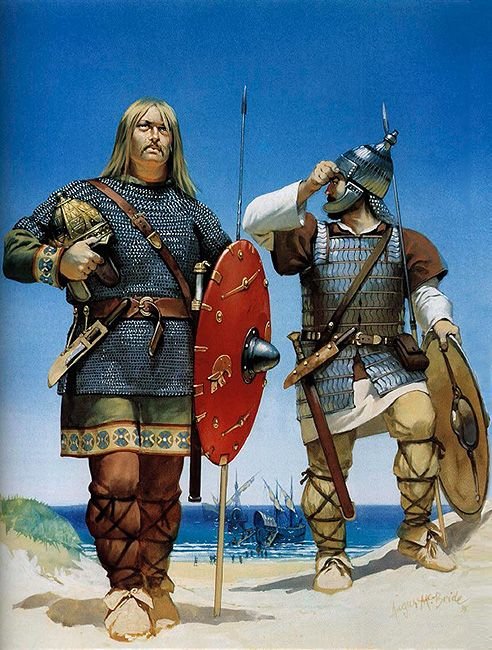
[Source]
And this is how the Vandals turned south again and crossed the straits of Gibraltar and, going where no other Barbarian tribe had ever been before, he invaded North Africa.
To be continued...Sources
http://www.ancient.eu/Vandals/
http://www.roman-empire.net/articles/article-016.html
https://agilewriter.com/History/Vandals.htm
http://remacle.org/bloodwolf/historiens/procope/vandales.htm
really good post as the others historic you did keep it up!
Thanks! :)